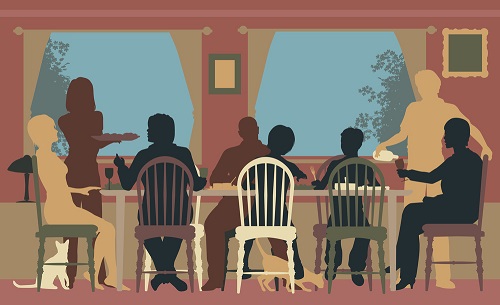Liberty Matters
Civic Education: More or Better?

If I were looking at the three papers responding to my essay on civic education as opinions submitted by Supreme Court justices, I would say one (Mark Schug) joins me in my opinion (with helpful elaboration) and the other two (Rachel Davison Humphries and Lee Trepanier) have filed concurring opinions. That is, we all agree that civic education is essential to liberty and democracy, and that it is performing well below par and needs improvement. Those concurring, as I understand them, would seek a deeper pedagogical basis for improving it, rather than the more immediate solutions I propose.
We know that how one looks at a problem and its solutions often depends on one’s own expertise and perspective. As the saying goes, “if all you have is a hammer, everything looks like a nail.” So, I should have clarified that I am a policy person, seeking to address what governments—especially state governments and school boards—can and should do. And in my view, we face a crisis and therefore some kind of immediate action is called for.
I note that people work on public policy problems on at least three levels: politics, policy and philosophy. Politics is the superficial, the quick and dirty, often contentious, and too much of civic education has now become political. I have tried to go a step deeper and suggest some policy changes that could make a difference, especially in assuring civic education throughout the grade levels. My critics would go deeper still to the underlying philosophy of civic education, or even of education itself. All well and good, but as a policy person who sees the house burning down, I would start elsewhere with a ladder and some firehoses.
Jeffrey Sikkenga, head of the Ashbrook Center, and I have completed a draft of a book: A Republic If We Can Teach It: Fixing America’s Civic Education Crisis. Our back-and-forth conversations as coauthors reflected the same tension and debate we see here. I felt the greatest need was for MORE civic education and he argued for BETTER. Of course, we need both, just as we need both educational philosophers and policy people working on the problem.
I am all for better civic education, and certainly memorizing dates and events is a far cry from the sort of civic education we need. Clearly it is right to say that what we are trying to create is better citizens, not just test-takers. I am a big fan of Ashbrook’s emphasis on teaching primary documents in history and civics, engaging students in the great ideas and conversations. As in all education, the question needs to be not just what a student has learned but what she or he has become.
I am less persuaded, however, that the place to start when the house is on fire is debating the shape of the rebuilt house. It reminds me of the 300 scholars and experts drafting “Educating for American Democracy” to improve civic education in 2021. The “roadmap” they produced was so full of twists and turns that it could hardly be turned over to schools for practical adoption.
While we debate the shape of an improved civic education, we need to make certain there is room in our schools and curricula to teach civic education at all. As long as there is little to no civic education in elementary and middle schools, with fewer than 10 states requiring as much as a year of it in high school—and some not requiring any—that is the place to start. With the federal government spending 5 cents per student per year on civic education and $54 on STEM education, that is a policy problem to be addressed. At the present moment, my biggest fear is too little civic education to sustain a democracy.
Copyright and Fair Use Statement
“Liberty Matters” is the copyright of Liberty Fund, Inc. This material is put on line to further the educational goals of Liberty Fund, Inc. These essays and responses may be quoted and otherwise used under “fair use” provisions for educational and academic purposes. To reprint these essays in course booklets requires the prior permission of Liberty Fund, Inc. Please contact oll@libertyfund.org if you have any questions.